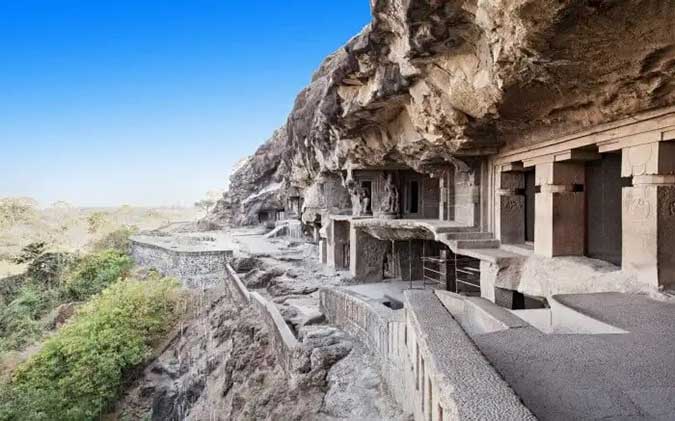Opinion
Visit to ajantha and ellora caves

The article on the Ajantha Caves in the Sunday Island (July 9) prompted me to recall my visit to the Ajantha and Ellora Caves in the State of Maharashtra 104 kilometres (65 miles) from the city of Aurangabad. They are major tourist attractions in India.
Aurangabad is a medieval Indian town established by and named after Mughal Emperor Aurangzeb, the son of Emperor Shah Jahan who built the Taj Mahal. In fact, there is a made to scale replica of the Taj Mahal in Aurangabad. Auranzeb established this town when he was the Viceroy of Deccan (Dakhin), a geographical region comprising present Maharashtra, Karnataka and Telengana.
I along with five other Lankans had received an award to spend just over a week at the American Centre in Hyderabad. As we had three free days, four of us decided to make a visit to the Ajantha and Ellora caves. We took the express train from Hyderabad to Aurangabad in the morning. After arriving, we arranged our hotel accommodation and hired an Ambassador taxi to take us to the Ajantha caves.
These comprise a set of 29 caves that are among the finest examples of the earliest Buddhist architecture, cave paintings and sculptures. The highlight of Ajantha caves are fresco type paintings although the sculpture, particularly the rich ornamentation of the chaitya pillars, is noteworthy. These caves in a horse-shoe formation are the only surviving example of a painting of the 1st century BC and 5th century BC.
It took us the whole day to explore all the caves. Most of the statues were hewn from the main rock itself. In addition to the stone-carved statues, there were paintings on the wall of the caves which were similar to the paintings of Sigiriya and the Elephanta caves in Mumbai which must be reached by boat.
After spending the night in Aurangabad, we rode the same taxi the following morning to see the Ellora caves . These are situated at a distance of 67 kilometres (43 miles) from the Ajantha caves. They are 34 rock-hewn Buddhist, Hindu and Jain temples and monasteries from the seventh to the 10th centuries at Ellora. The most amazing of these is the Kailasa Temple which is the largest monument in the world cut from living rock. It was an unexpected and unforeseen opportunity I had of seeing these world- famous Ajantha and Ellora caves which are now UNESCO Heritage sites.
HM NISSANKA WARAKAULLE